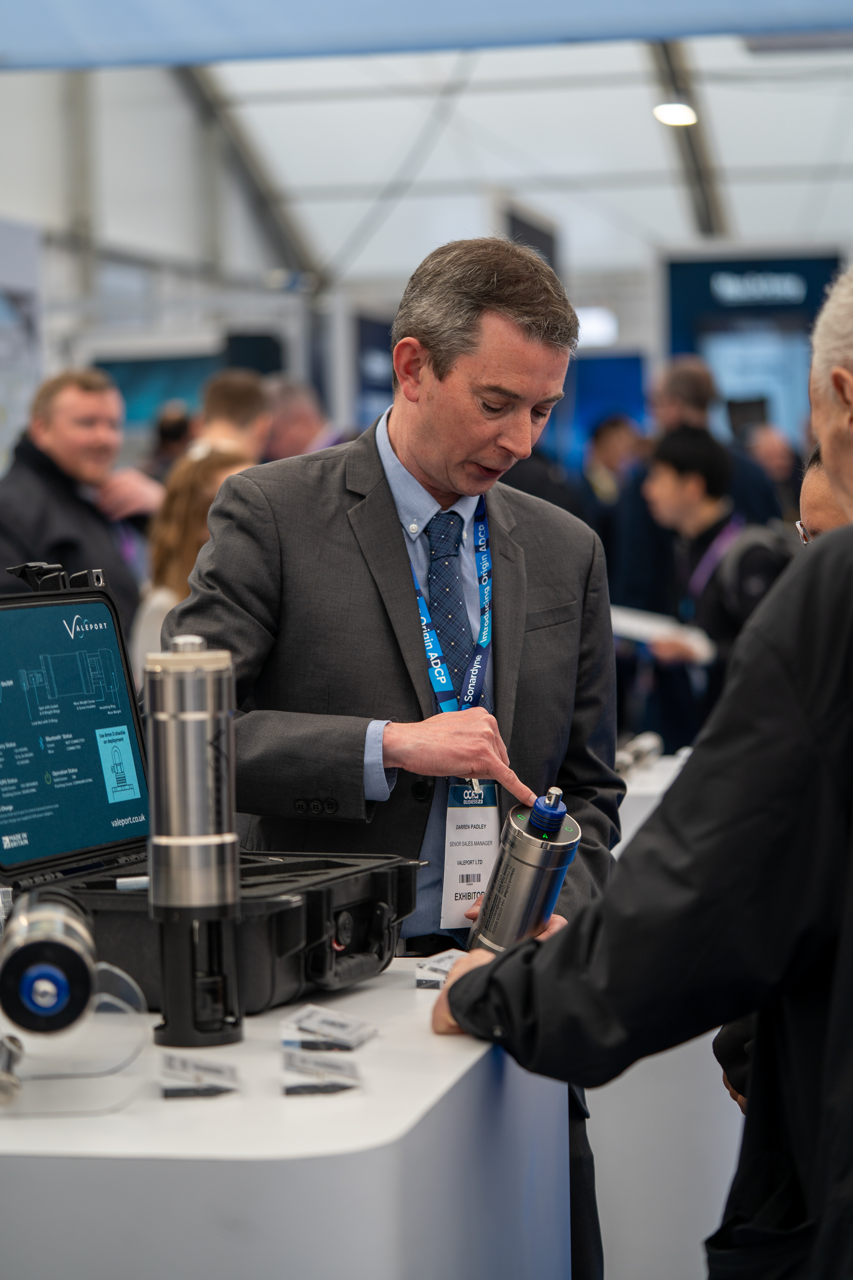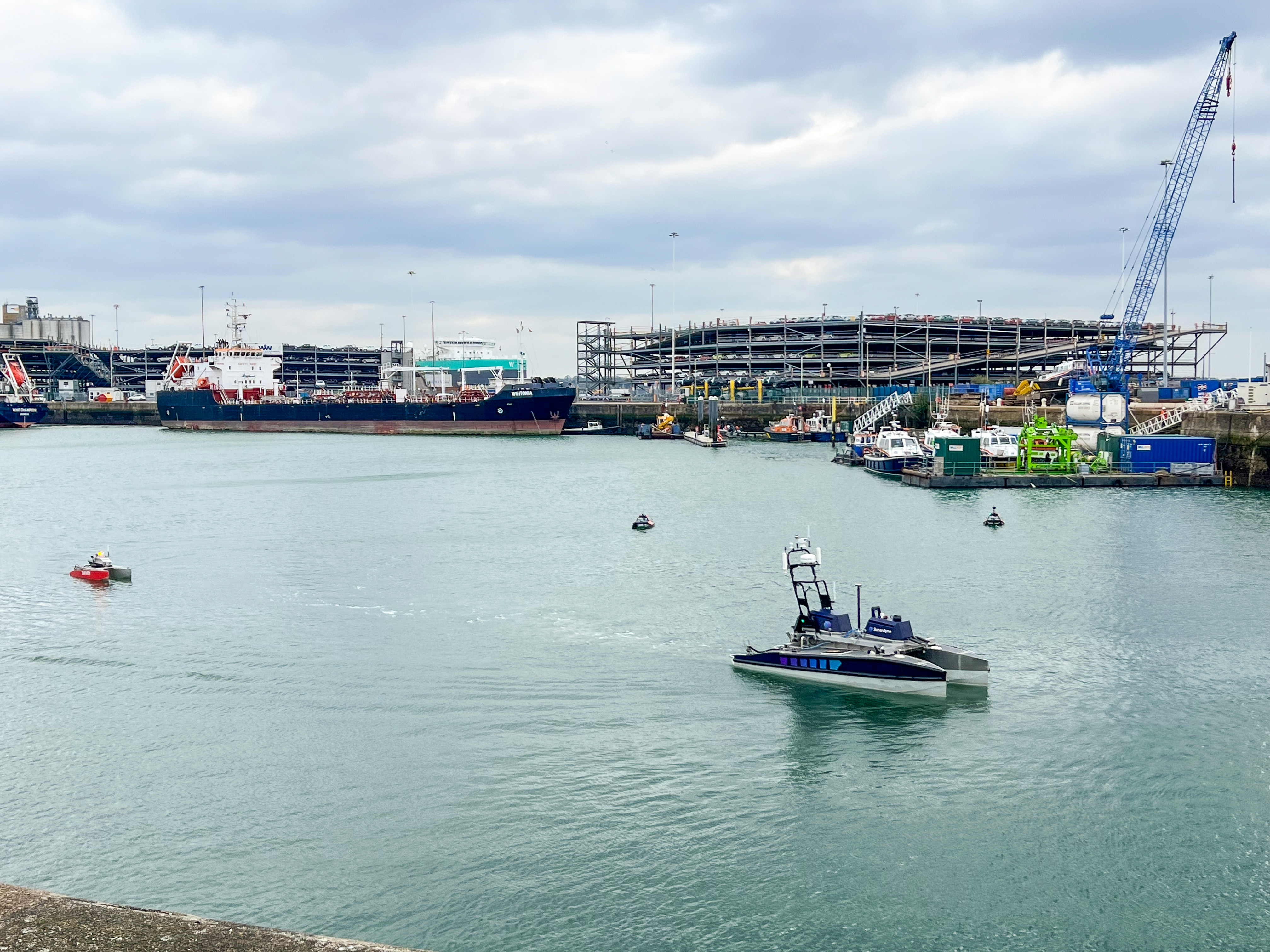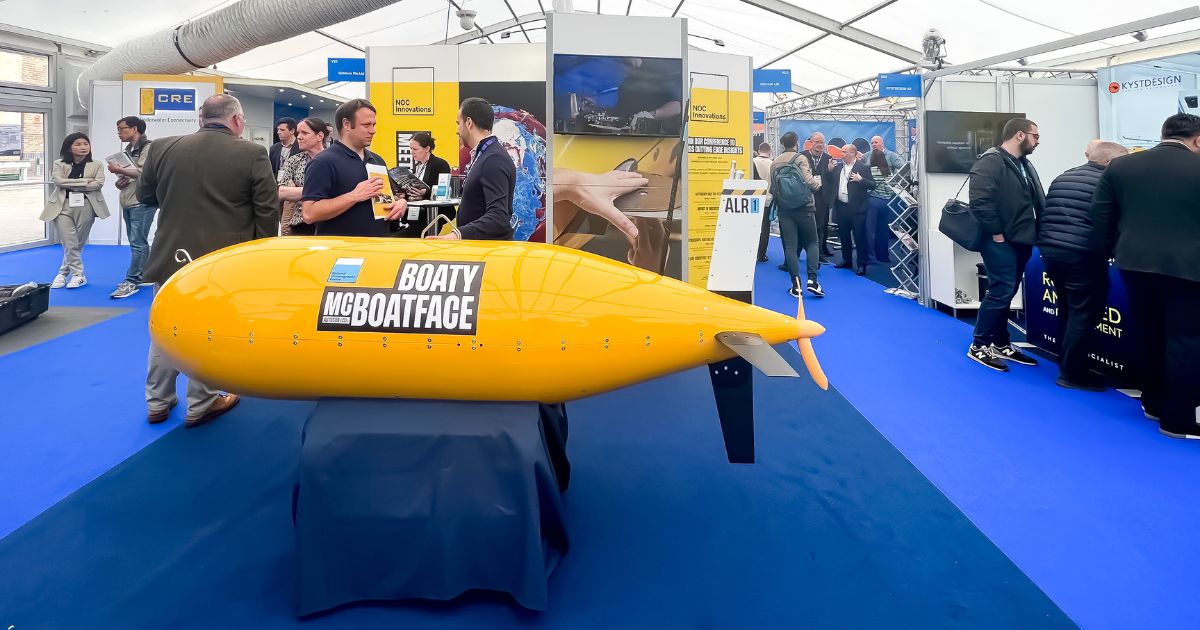Throw 5,000 attendees and 300 exhibitors from 80 countries—all passionate professionals seeking practical solutions to ocean-related challenges—into one location, and you’re bound to leave inspired, educated, and quite frankly in awe of what the applied marine science trade is capable of.
Ocean Business 2023, hosted at the National Oceanography Centre (NOC) in Southampton, UK, was the place to be in April (18–20) to create and reestablish relationships in the post-pandemic era, announce new collaborations, present on existing and upcoming products, and engage in multifaceted discussions.
Professor Ed Hill CBE, Chief Executive of the National Oceanography Centre, kicked us off by distilling the main themes on how the ocean community and its many and varied stakeholders will achieve Sustainability of our Oceans and how ocean technology is a key puzzle piece in getting us there.
Big Data
Made possible by the decadal advancement of ocean observing technology, ‘Big Data’ has brought the ocean—and the role it plays in regulating so many environmental variables—into sharp focus. Without a doubt, we know that increased ocean temperatures have decreased the ocean’s ability to hold dissolved oxygen, a key component of biologically productive habitats. We also know that the ocean’s buffering system is not an infinite solution to increased atmospheric CO2 concentrations as the ocean’s overall pH continues to dip and become more acidic.
But while we have begun to resolve some of the large, mysterious ocean phenomena—we have only scratched the surface. A call for increased ocean infrastructure [research vessels, remotely operated vehicles (ROVs), and ocean sensors] was made.
eDNA Breaking Through
Advancements in eDNA serve as one of the answers for increasing our overall understanding of ocean processes and food chains. While eDNA is still very new across research and academic practices, it is beginning to break into the commercial ocean market. Filling the gap of traditional sampling practices for diversity and abundance surveying required by environmental impact assessments (EAI), eDNA, when paired with other discrete observations, strengthens the magnitude of how much we know about an area. While eDNA cannot resolve species concentration, yet, it can pick up signals from important organisms—like endangered or threatened species—that discrete trawling, tows, and sampling could otherwise miss.
McLane Research Laboratories, Inc., an ocean instrument company specializing in advanced, cost-effective ocean instruments, is breaking into the eDNA market with the RoCSI—their latest technology transfer from the NOC.
“The RoCSI is an ideal complement to our sampler product line as it adds fine-porosity, high-resolution sampling to our capabilities” says McLane CEO Yuki Honjo. “This innovative instrument will support researchers in the wide-ranging field of ocean eDNA.”
But while eDNA is seen as a measurement that can let us understand diversity like never before, it’s a newer player on the ocean industry field that unlocks the true power of eDNA being used at an industrial level. NatureMetrics has cultivated a commercial portfolio for eDNA sampling all under one roof. From sample kits to eDNA processing to web visualization platforms—they have thought of it all.
Low Cost, Efficient, & Accurate
It was evident at Ocean Business that one size does not fit all, and this directly applies to ocean instrument end-users. Private NGOs, graduate and small institutions researchers, and scientists representing established ocean service providers were all on the floor searching for their next tool. To meet needs and restrictions—generally wholly centered around funding—a diverse set of companies were represented at Ocean Business with a myriad of offerings.
The new Valeport SWiFT Deep CTD was a striking instrument by all standards. Rated for up to 6,000 m, the titanium-housed CTD was built for ease of use while providing accurate and precise data.
 Valeport displays their latest ocean technology on the Ocean Business exhibit floor. (Image credit: Valeport)
Valeport displays their latest ocean technology on the Ocean Business exhibit floor. (Image credit: Valeport)
Guy Frankland, Valeport’s Head of Marketing, added: “We had a fantastic show. There was a really vibrant positive vibe across the three days, and it was an ideal venue to launch the latest addition to our SWiFT profiler family, the new SWiFT Deep CTD. We were thrilled by the reaction to our new SWiFT Deep CTD, and it was a pleasure to put our latest instruments and cutting-edge technology into the hands of a diverse group of researchers, surveyors and technologists and to explore opportunities with them. Our team enjoyed listening and sharing ideas which will help shape the future of ocean technology. We felt there was a real buzz in the exhibition hall, and this definitely translated to the Valeport stand, making Ocean Business a great success for us.”
Another ocean instrument company, NKE Instruments, has shown the value of producing low-cost, efficient sensors through their collaborative projects with commercial fisheries. With new products coming online throughout the rest of 2023, NKE instruments will be ones to watch.
Autonomy
Uncrewed, autonomous solutions were at the forefront of Ocean Business 2023 and will be the main theme the ocean industry marches with for the foreseeable future. Decarbonizing research, conservation, and commercial operations fleets will be made possible through forward-thinking autonomous technology leaders. In addition to decreasing CO2 outputs autonomy of ocean platforms will lessen human risk during operations and expand the capabilities of ocean operations to far-reaching areas of the planet.
A private demo put on by Bayonet Ocean Vehicles the Monday before Ocean Business 2023 set the scene for “autonomy on demand”. While impressed by the low profile and adaptability of their amphibious crawler, I was more interested in its ability to complete operations in a highly-energetic and violent coastal region—the surf zone.
Nick Hartman, VP Strategy and Growth, and General Manager of Bayonet Ocean Vehicles, says: “Bayonet Ocean Vehicles manufactures the only autonomous underwater ground vehicles in the world. These AUGVs are a work horse, providing survey capabilities for cable transit, offshore wind, and beach erosion as well as for use in near shore unexploded ordnance (UXO) applications. The vehicles can be outfitted with payloads customized for the jobs at hand. There are no other vehicles that can travel from the beach through the surf zone to depths up to 100 meters.”
Del Mar Oceanographic’s innovative approach to autonomous profiling was on display in the NOC port on board the RV Callista. The Wirewalker offers customized sensor payloads, and its rapid vertical profiling is powered by ocean waves and movement.
"We couldn't have been happier with the Ocean Business 2023 Wirewalker demo! Participants got to 'be the waves' by simulating the work the buoy typically does. It was great seeing the reactions to the Wirewalkers performance as it walked it way to the bottom, then returned to the surface smoothly and under it's own buoyancy. When you're in need of vertical profiles of the water column, the temporal and vertical resolution that the Wirewalker enables can't be beat!" Shares Chris Kontoes, DMO Sales Director.
Saildrone, a mission-as-a-service autonomous surface vehicle (USV) company, announced its new partnership with Seabed 2030 at Ocean Business. Saildrone’s turnkey fleet of USVs offers a proof of concept for a scalable collection and data service company to make sustainable blue growth.
“Saildrone’s vision is of a healthy ocean and a sustainable planet. A complete map of the ocean floor is fundamental to achieving that vision. We are proud to collaborate with Seabed 2030, to enable the mapping of our entire seabed, for the benefit of the global community,” said Saildrone founder and CEO Richard Jenkins.
Bridging Public & Private
In the pursuit of a successful and abundant Ocean Enterprise, a collaborative task force joins key ocean players the Global Ocean Observing System (GOOS), the Marine Technology Society (MTS), the National Ocean and Atmospheric Administration (NOAA), and the United Nations Decade of Ocean Science for Sustainable Development (Ocean Decade) to carry out Dialogues with Industry.
It is concluded that climate change (forecasts, adaptation, investment in carbon storage) and ocean management (ecosystem services and sustainable blue growth) are the two motivating key factors for growing an Ocean Enterprise, but how do we do that?
The Ugly Truth
Building an Ocean Enterprise is no easy task, and some of the greatest difficulties we are dealing with right now stem from barriers that inhibit forward advancement. Ocean industry markets—observing technology, observations, data, and information delivery—are immature and therefore impact how fast and efficiently we can develop systems. Additionally, we can all agree that new ocean technology is needed, but there is no established production line for ocean technology. So, what can we do to lower barriers and improve the movement of ocean tech?
Dr. Mark Rains, Chief Science Officer for the State of Florida, echoed the same sentiment at MTS TechSurge Florida Estuary and Coastal Monitoring – Looking Ahead to 2030. Barriers facing the commercial ocean market and applied marine research has a lot to do with funding and the ability to act on a problem. His main message stressed the importance of authority and priority for marine industry practitioners. Companies should heed what federal, local, and state governments have the authority to support and fund, and what those governments have a priority to mitigate and improve will be the most efficient and effective way of getting the ball rolling.
 Uncrewed surface vehicles (USVs) prepped for demos in the NOC port at Ocean Business 2023. (Image credit: Haley McQueen)
Uncrewed surface vehicles (USVs) prepped for demos in the NOC port at Ocean Business 2023. (Image credit: Haley McQueen)
Creating the Ocean Enterprise
Together as the Ocean Business community, we are capable of creating a successful and abundant Ocean Enterprise capable of Sustainability of our Oceans. Through (1) meaningful societal and government change—like realigning ocean observation to be seen as critical infrastructure like weather and storm observing, (2) nurturing a culture collaboration across industries, regions, and discipline, and (3) bolstering market dynamics and opportunities capable of shaping the ocean future we need.
This exclusive feature was published in Environment, Coastal & Offshore (ECO) Magazine’s 2023 Summer issue—Bio-Resilient Coasts. To read more features like this one, visit: http://digital.ecomagazine.com/publication/?i=793340&p=23&view=issueViewer.





